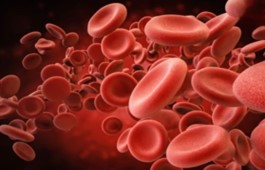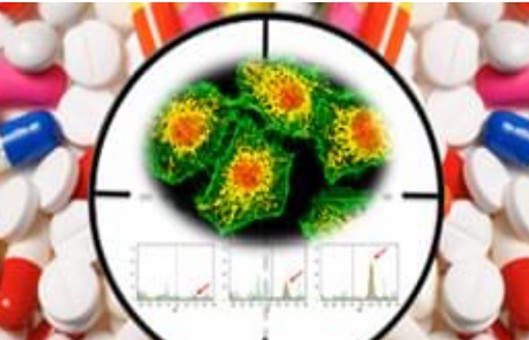Resources
-
Cell Services
- Cell Line Authentication
- Cell Surface Marker Validation Service
-
Cell Line Testing and Assays
- Toxicology Assay
- Drug-Resistant Cell Models
- Cell Viability Assays
- Cell Proliferation Assays
- Cell Migration Assays
- Soft Agar Colony Formation Assay Service
- SRB Assay
- Cell Apoptosis Assays
- Cell Cycle Assays
- Cell Angiogenesis Assays
- DNA/RNA Extraction
- Custom Cell & Tissue Lysate Service
- Cellular Phosphorylation Assays
- Stability Testing
- Sterility Testing
- Endotoxin Detection and Removal
- Phagocytosis Assays
- Cell-Based Screening and Profiling Services
- 3D-Based Services
- Custom Cell Services
- Cell-based LNP Evaluation
-
Stem Cell Research
- iPSC Generation
- iPSC Characterization
-
iPSC Differentiation
- Neural Stem Cells Differentiation Service from iPSC
- Astrocyte Differentiation Service from iPSC
- Retinal Pigment Epithelium (RPE) Differentiation Service from iPSC
- Cardiomyocyte Differentiation Service from iPSC
- T Cell, NK Cell Differentiation Service from iPSC
- Hepatocyte Differentiation Service from iPSC
- Beta Cell Differentiation Service from iPSC
- Brain Organoid Differentiation Service from iPSC
- Cardiac Organoid Differentiation Service from iPSC
- Kidney Organoid Differentiation Service from iPSC
- GABAnergic Neuron Differentiation Service from iPSC
- Undifferentiated iPSC Detection
- iPSC Gene Editing
- iPSC Expanding Service
- MSC Services
- Stem Cell Assay Development and Screening
- Cell Immortalization
-
ISH/FISH Services
- In Situ Hybridization (ISH) & RNAscope Service
- Fluorescent In Situ Hybridization
- FISH Probe Design, Synthesis and Testing Service
-
FISH Applications
- Multicolor FISH (M-FISH) Analysis
- Chromosome Analysis of ES and iPS Cells
- RNA FISH in Plant Service
- Mouse Model and PDX Analysis (FISH)
- Cell Transplantation Analysis (FISH)
- In Situ Detection of CAR-T Cells & Oncolytic Viruses
- CAR-T/CAR-NK Target Assessment Service (ISH)
- ImmunoFISH Analysis (FISH+IHC)
- Splice Variant Analysis (FISH)
- Telomere Length Analysis (Q-FISH)
- Telomere Length Analysis (qPCR assay)
- FISH Analysis of Microorganisms
- Neoplasms FISH Analysis
- CARD-FISH for Environmental Microorganisms (FISH)
- FISH Quality Control Services
- QuantiGene Plex Assay
- Circulating Tumor Cell (CTC) FISH
- mtRNA Analysis (FISH)
- In Situ Detection of Chemokines/Cytokines
- In Situ Detection of Virus
- Transgene Mapping (FISH)
- Transgene Mapping (Locus Amplification & Sequencing)
- Stable Cell Line Genetic Stability Testing
- Genetic Stability Testing (Locus Amplification & Sequencing + ddPCR)
- Clonality Analysis Service (FISH)
- Karyotyping (G-banded) Service
- Animal Chromosome Analysis (G-banded) Service
- I-FISH Service
- AAV Biodistribution Analysis (RNA ISH)
- Molecular Karyotyping (aCGH)
- Droplet Digital PCR (ddPCR) Service
- Digital ISH Image Quantification and Statistical Analysis
- SCE (Sister Chromatid Exchange) Analysis
- Biosample Services
- Histology Services
- Exosome Research Services
- In Vitro DMPK Services
-
In Vivo DMPK Services
- Pharmacokinetic and Toxicokinetic
- PK/PD Biomarker Analysis
- Bioavailability and Bioequivalence
- Bioanalytical Package
- Metabolite Profiling and Identification
- In Vivo Toxicity Study
- Mass Balance, Excretion and Expired Air Collection
- Administration Routes and Biofluid Sampling
- Quantitative Tissue Distribution
- Target Tissue Exposure
- In Vivo Blood-Brain-Barrier Assay
- Drug Toxicity Services
Drug Metabolite Stability Assay Protocol in Whole Blood
GUIDELINE
This protocol describes an experiment to determine the stability of gemcitabine and its primary metabolite dFdU in whole blood. Following the preparation of plasma from the spiked whole blood, as described in this protocol, the samples must be prepared and analyzed using a fully validated analytical method. Our studies used an LC-MS/MS-based method that we developed and validated. The gemcitabine and dFdU concentrations used for these stability studies were based on the expected plasma levels in patients treated with standard doses of gemcitabine, and the sample volumes chosen were based on the inherent sensitivity and linear range of our validated assay method. The choice of method for quantitation of these or any other analytes is up to the user, but full validation of the chosen method is required to ensure that any loss of analyte or lack of accuracy or precision is a reflection of analyte stability in whole blood or stored plasma.
METHODS
- Add 0.5 mL of THU solution (10 mg THU/mL water) to 25 mL of whole blood and mix thoroughly.
- Label 42 microcentrifuge tubes for whole blood samples.
- Add 500 μL aliquots of THU-treated blood to each of the 42 microcentrifuge tubes.
Low analyte concentration sample set:
- Using a repeating pipettor set to deliver a 10 μL volume, spike each of the 21 microcentrifuge tubes labeled for the low analyte concentration with the 25 μg/mL analyte solution and mix thoroughly. This will result in a 0.50 μg/mL analyte concentration in the sample.
- Start timer.
- Immediately transfer the 3 control tubes for low concentration to the centrifuge and spin at 2000 × g for 15 minutes to prepare plasma. When the centrifuge stops, transfer the plasma (supernatant) to a labeled microcentrifuge tube and immediately transfer it to the freezer.
- As soon as the control tubes are spinning, transfer the "0" sample tubes to the ice bath. Leave the "A" tubes at ambient temperature.
- At 15 minutes, transfer 3 "0" tubes and 3 "A" tubes to the centrifuge and process as in step 6.
- At 30 minutes, transfer 3 "0" tubes and 3 "A" tubes to the centrifuge and process as in step 6.
- At 60 minutes, transfer 3 "0" tubes and 3 "A" tubes to the centrifuge and process as in step 6.
High analyte concentration sample set:
- Using a repeating pipettor set to deliver a 10 μL volume, spike each of the 21 microcentrifuge tubes labeled for the high analyte concentration with the 500 μg/mL analyte solution and mix thoroughly. This will result in a 10 μg/mL analyte concentration in the sample.
- Start timer.
- Immediately transfer the 3 control tubes for high concentration to the centrifuge and spin at 2000 × g for 15 minutes to prepare plasma. When the centrifuge stops, transfer the plasma (supernatant) to a labeled microcentrifuge tube and immediately transfer it to the freezer.
- As soon as the control tubes are spinning, transfer the "0" sample tubes to the ice bath. Leave the "A" tubes at ambient temperature.
- At 15 minutes, transfer 3 "0" tubes and 3 "A" tubes to the centrifuge and process as in step 6.
- At 30 minutes, transfer 3 "0" tubes and 3 "A" tubes to the centrifuge and process as in step 6.
- At 60 minutes, transfer 3 "0" tubes and 3 "A" tubes to the centrifuge and process as in step 6.
Sample analysis:
- All samples should be processed and analyzed as a single batch using the validated bioanalytical method. Determine the accuracy and precision of analyte measurements for each time point and temperature. Graphically and statistically examine the measured concentrations at each time point and temperature to determine if degradation of analytes occurred before plasma preparation.
Creative Bioarray Relevant Recommendations
- Creative Bioarray offers different ranges of human blood samples, such as whole blood, blood serum, plasma, prothrombins, and coagulation factors. We provide a comprehensive service for the metabolites in biological matrices in support of drug development research. This service can be provided as part of a full in vitro metabolism package or as a single assay. We also provide standard, cost-effective in vitro metabolism services, including drug metabolic stability services and drug-drug interaction services to support your drug development process.
NOTES
- Suggested tube numbering: First number = analyte concentration (1 for 0.50 μg/mL, 2 for 10 μg /mL concentration in whole blood); letter = C for control (immediate processing), 0 for iced samples, A for ambient temperature; second number = time in minutes in whole blood before plasma preparation; third number = replicate sample of triplicates (1, 2, or 3).
- The range of storage times and the temperatures for assessing sample stability in whole blood chosen for this protocol are based on our experience performing pharmacokinetic studies in an academic medical center. If samples are to be acquired in a different setting, such as in a general clinic or community site, then the choices of temperatures and time points must be chosen to span the time and temperature ranges expected for the actual acquisition and processing of samples.
RELATED PRODUCTS & SERVICES
For research use only. Not for any other purpose.



